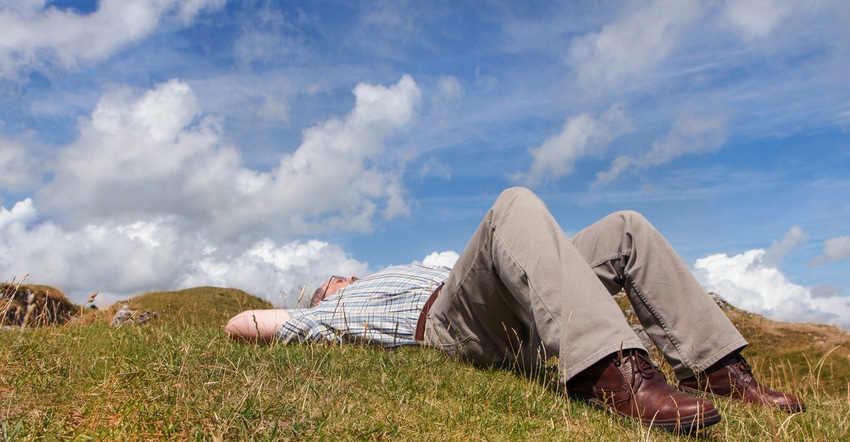March 16, 2017

As planting season draws near, it’s all about “go time,” which often equates to very long hours and little rest. If you want to increase your memory and awareness and have more energy to build productivity, shutting down for a few minutes may make a world of difference.
Look beyond a quick cup of joe, high-priced canned elixirs or trendy supplements. Instead, take a simple nap. Just ask the Europeans, who whole-heartedly embrace the concept by shutting down in the afternoon and taking a power nap before returning to work.
Unfortunately, this isn’t the case in the U.S., where a midday nap is not only considered a luxury, but also often perceived as downright laziness or a weakness. This stigma is starting to wane, as there’s more proof of its benefits. Nappers are in good company: Winston Churchill, John F. Kennedy, Ronald Reagan, Napoleon, Albert Einstein, Thomas Edison and George W. Bush are all known to have valued an afternoon nap.
Studies have shown that short naps can improve awareness and productivity. I know that we live in the age of autosteering and digital everything, but there’s still plenty of opportunity for error — which may result in lost revenue — if you’re not mentally alert. Working in a fog can be not only costly, but also dangerous.
Take 15
You don’t need much; just 15 to 20 minutes can make a world of difference. It doesn’t replace a good night’s rest, but when “go time” is in full swing, taking a few minutes in the afternoon to decompress, close your eyes and just recharge is invaluable. Of course, a quiet, dark area is best, but if that’s just not in the cards, a towel over your eyes with your head back in the tractor cab can work, too.
These power naps are not as deep as longer naps, and you will be able to get right back at your day immediately after waking up. If you nap for 30 minutes, you may deal with grogginess because you wake up just as your body enters a deeper stage of sleep. The same can be said if you sleep for an hour, but on the other hand, these 60-minute naps provide an excellent memory boost, according to researchers. The longest naps — lasting about 90 minutes — are recommended for those people who just don’t get enough sleep at night. Since it’s a complete sleep cycle, it can improve emotional memory and creativity, according to the National Sleep Foundation.
The perfect nap
Everyone, no matter how high-strung, has the capacity to nap. But the conditions need to be right. Sara Mednick, a scientist at the Salk Institute for Biological Studies that is at the forefront of napping research, wrote the book “Take a Nap! Change Your Life.” Here are some of her helpful hints:
• Recognize you’re not being lazy; napping will make you more productive and more alert after you wake up.
• Try to nap in the morning or just after lunch; human circadian rhythms make late afternoons a more likely time to fall into deep (slow-wave) sleep, which will leave you groggy.
• Avoid consuming large quantities of caffeine, as well as foods that are heavy in fat and sugar, which meddle with a person’s ability to fall asleep. Instead, in the hour or two before your nap time, eat foods high in calcium and protein, which promote sleep.
• Find a clean, quiet place where passersby and phones won’t disturb you.
• Try to darken your nap zone or wear an eyeshade. Darkness stimulates melatonin, the sleep-inducing hormone.
• Remember that body temperature drops when you fall asleep. Raise the room temperature or use a blanket.
• Once you are relaxed and in position to fall asleep, set an alarm — there’s one on my most cellphones — for the desired duration.
You May Also Like




